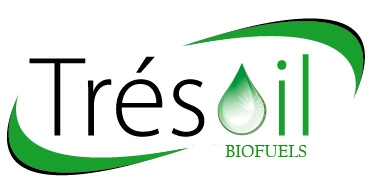Consortium of port waste to energy power plant Project
7 years agoObjective
Port waste reception facilities are important in preventing marine pollution by facilitating the efficient, safe and environmentally responsible disposal of ship-generated waste ashore. Following EU Action In order to minimise these and other impacts from waste discharges. The EU Directive 2000/59/EC on port reception facilities for ship-generated waste and cargo residues, which aligns with the IMO Convention MARPOL 73/78 (International Convention for the Protection of Pollution from Ships, 1973, as modified by the Protocol 1978), aims to reduce pollution from the waste produced by ships.
To form a transnational consortia cluster of European ports and businesses to apply for EU funding for a waste to energy power demonstration project, sited in a suitable location in the port of Constanta ;
Further to our interest in promoting initiatives in the area of green innovation and to encourage the responsible management of waste. The consortium of port management would access EU funds (grants) for a waste to energy (W2E) demonstration pilot power plant project to produce electricity , thermal heat(CHP) for the port’s own use or to supply to the national grid, or alternatively our system can supply pure hydrogen() from municipal and commercial waste. Following the gasification and syngas clean-up, a water gas shift reactor is used to convert the CO to Hydrogen followed by a compressor and pressure swing absorption (PSA) unit.
Waste to energy gasification (W2E) technology fuelled by port waste would facilitate, efficient, safe and environmentally responsible disposal of ship-generated waste ashore. The waste to energy gasification facility will feature an advanced a 5 or 25 tons per day modular energy-from-waste plant system as well as a circular economy recycling facility. This project will turn a cost into a source of profit, with no harmful emissions added to the atmosphere (closed loop no smoke stack (chimney)), and no dangerous residues to dispose of after ; In line with European Parliament and Council of EU number 1291/2013 for societal challenge “Climate Action, Environment, Resource Efficiency and Raw Materials”.
It will also demonstrate to every commercial client and port management how a 5 tons of waste per day system or 25 tons per day modular W2E system with a small footprint located on the client’s property can eliminate ship waste and commercial waste. All systems are remotely monitored (SCADA).
Hydrogen Powered Forklifts and Material Handling Equipment
On site port location of a hydrogen production facility is the first step to establishing a comprehensive fuel infrastructure for fuel cell drive train vehicles. Hydrogen powered forklifts and other material handling equipment; the trucks operate with consistent power for an entire shift, eliminating challenges that come with a depleting battery. When it’s time to refuel, management knows operators will be back on the floor quickly. Hydrogen fuel cell forklifts, pallet jacks and other equipment can be refuelled in just minutes, replacing the 12-15 minutes dedicated to battery changes in the past. This level of predictability allows fleet managers to properly schedule and scale their operations to cost-effectively meet demands. Distribution centers operate around the clock, 364 days a year. It’s a business that does not stop – so workers and their lift trucks can’t stop either. Hydrogen propulsion forklifts move pallets of raw materials weighing up to 2,000 kilos, depleting batteries quickly. Hydrogen fuel cells operate like a fully charged battery for the entire shift – always available and always at full power.
Fuel Feedstock Ship-Generated Waste
This waste comprises for example food rests from the crew, household waste (such as plastic, cardboard, paper), waste oil and maintenance waste from the engine room such as soot, engine parts, paint rests and cleaning cloths. Also waste from loading operations, these are for instance cargo remnants in the holds or in the tanks of the ship after unloading or cleaning. The wastes generated or landed in ports and harbours can be broadly divided into four main sources, operational and domestic waste from ships and boats, waste from commercial cargo activities, wastes generated from maintenance activities and associated maritime industry activities and domestic (office) waste generated by port and harbour employees and users.
European Funding
European Structural and Investment Funds, Horizon 2020, the Competitiveness of Enterprises and Small and Medium-sized Enterprises (COSME) framework programme, the Creative Europe programme and the LIFE+ programme. The proposal for the 7th European Environment Action Programme is also linked to coastal and maritime tourism. In addition, the European Investment Bank provides SMEs with financing for investments in tourism and/or in convergence regions. The circular economy package already has €;funding from the European Structural and Investment Fund (ESIF) and €650 million from Horizon 2020 (the EU funding programme for research and innovation
Kind regards
Roger Preston
Tresoil Biofuels SRL
Mobile: + 40 723 030 662
Email:
Skype: smarthabit

Please Log In to See This Section